I was excited when the Samyang/Rokinon Tilt-Shift 24mm f/3.5 ED AS UMC Lens was announced as it seemed like a perfect fit for the manufacturer. Tilt-shift lenses are, by nature, manual focus only, and Samyang/Rokinon have made their reputation by making manual focus only lenses with good build quality and great optics. The Canon TS-E 24mm f/3.5L II Tilt-Shift Lens has a great reputation for having stunning optics, but it isn’t a financial lightweight at a $2000 price tag. For many people a tilt-shift lens is too niche to make that kind of investment in. This struck me as an arena that Samyang/Rokinon could really compete in. The prices on their lenses have always been extremely reasonable, and the optics have frequently equaled and even bettered far more expensive options.
The lens was released to relatively little fanfare about a year ago, but it slipped through the cracks for my reviews until just recently. To this point I have been consistently impressed with Rokinon lenses, but unfortunately this lens proved the first disappointment to me. More on that in a moment.
Tilt-shift lenses are a niche item. They are invaluable to people doing architectural photography because of their unique combination of low native distortion along with the tilt-shift mechanism that allows the photographer to straighten lines perfectly. Software has come a long way in being able to correct distortion and geometry in post (particularly when Adobe introduced its “Upright” tools), but at a significant cost in the crop of the image. A typical 24mm image from a standard zoom might become something more like a 35-40mm angle of view after the image is cropped to accommodate the geometric corrections. A tilt-shift lens can do this optically, and as a result retain the full 24mm angle of view can be retained, which is particularly important. The Rokinon has only marginally less functionality than the Canon equivalent (it doesn’t rotate a full 360 degrees), and is a mechanically sound instrument.
The build quality is very nice. It is primarily engineered plastics around some metal internal bits and a metal bayonet mount. It is both lighter (24oz/680g vs. 27.5oz/780g) and smaller in circumference than the Canon 24mm T/S. The Canon tapers out along the focus ring to a considerably wider width, while the Rokinon has a fairly uniform circumference. Unlike the Canon, the Rokinon is a bit blocky in the area around the tilt/shift mechanisms. The aperture ring (aperture is also manually controlled) clicks nicely from f/3.5 to f/22. Full stops are shown on the dial, but half stop positions can be selected as well. The aperture ring has a slightly more “plasticky” feel that what I would prefer, but this is more of a “feel” issue than a functionality issue. I am accustomed to the aperture rings on a lot of vintage lenses where they are all metal. The focus ring, however, is lovely. It has a slightly soft texture feel with fine ribbing, and it is perfectly damped. It moves every so smoothly, and is, I think the nicest execution of a focus ring of any Samyang/Rokinon product I have used. The overall design appearance, like other recent Samyang/Rokinon lenses, is pretty much a rip-off of the Canon “L Series” design, right down to the red ring (although I actually find the Rokinon’s red aluminum ring a little classier then the plastic equivalent on L lenses). The placement of the red ring (usually next to the focus ring about midway up the body) is the only real difference in the casual inspection of design ethos. Note that the lens extends ever so slightly during focus, but the movement is only about a quarter of an inch and is scarcely noticeable.
Unlike other lenses, a tilt-shift lens also has the mechanism for tilting the lens and shifting the lens. On the Rokinon this equals a slightly larger black knob for tilting (8.5 degrees left and right), a smaller black knob for shifting (+/- 12 degrees), and then a corresponding grey knob for each on the opposite side that is a locking mechanism. It is important to remember to loosen the locking knobs before shifting. Roger at LensRentals reports that tilt-shift lenses frequently return damaged because someone forced movement while the locking knobs were tightened. The locking knobs feel slightly flimsy to me, but again, that is a “feel” perception. The final controls on the lens are a couple of levers that allow rotation of each of these mechanisms. This is the only real mechanical difference between the Rokinon and the Canon. It allows a full 360 degrees of rotation, while the Rokinon allows for only 180 degrees of rotation.
One other note on this movement: there is a somewhat delicate balance between the movement knobs and the locking knobs. If the locking knobs are loosened too much there is no friction left, meaning that that the lens will just drop to the lowest position of the shift axis. It can be a bit annoying. You need to learn to maintain a balance between friction and freedom of movement. It isn’t really all that complicated, but tilt-shift lenses have a very different learning curve than other lenses.
Tilt-shift lenses operate by moving the focal plane relative to the sensor. This can used to correct for geometric distortions (the most significant use) but also to do creative things with the depth of field. Many landscape photographers love a good tilt-shift lens because they can a massive depth of field while still, for example, deemphasizing a foreground that might prove otherwise busy or overwhelming. The “tilt-shift” look often emphasized in software is the shallow plane of field in the middle of the image that gives a “miniature” effect.
Tilt-shift lens can also create exceptional panoramic images because the lens can be mounted on a tripod and a quick three image panorama can be made without moving the camera by simply shifting the lens to the left, centering it, and then shifting it to the right. The plane of focus remains flat, producing a more consistent result in the panorama. I am very unused to seeing a panoramic image come out of Photoshop’s Photomerge looking like this!
The ability to make such quality panoramic issues is perhaps my favorite application of this particular lens, and I enjoyed the simple natural of tilting, centering, and tilting in the opposite direction to produce a quick, beautiful panoramic shot with an amazingly wide angle of view thanks to the relative lack of distortion and the consistency in the plane of focus.
By the way, using the lens in a similar way on the opposite axis produces great vertoramas that are essentially square by nature but include a huge amount of information. Here’s a two frame vertorama made quickly and easily.
I didn’t have access to an amazing interior during the time of my review, but just imagine the interior shots of cathedrals or a museum that you could create!
I was genuinely impressed by this particular shot (part of a series) because of the great geometry in the building and general scene.
I have shot something similar with my beloved Tamron 24-70 VC before, and notice how much more “lean” there is to the scene.
I am a relative rookie in using tilt-shift lenses, but it is clear to me that the longer you used a tilt-shift lens the more creative ways you could learn to play with depth of field. The images that an experienced tilt-shift photographer can make are truly unique. The Rokinon can do all of these things, and the 24mm focal length is a true “sweet spot” for doing landscapes. Tilt-shift lenses also make unique lenses for shooting macro type subjects. Check out this little series and see all the different ways one can frame a close subject without the tripod and camera ever moving.
The other thing that tilt-shift lenses are usually known for is bitingly sharp optics. This was an expected area of strength for the Samyang/Rokinon, but my expectations were unfortunately not at all met.
The Rokinon is soft.
Disturbingly soft wide open. Hazy and indistinct. Bryan Carnethan’s lens sharpness comparison tool over at the Digital Picture says it all. The Canon may be twice as expensive, but it looks about ten times as sharp wide open. Stopping down helps, but even at f/8-f/11 (peak sharpness zones), the lens is not particularly impressive. Contrast is weak at wider apertures. Some reviews have found the resolution fine, but my own findings are pretty consistent with what I see from Bryan’s test charts. Either reviewers have critically different standards for acceptable sharpness or else there is tremendous sample variation. This series was captured on a tripod with mirror lock and 10x Live View focus.
Now take a look at the crops from the rocks about halfway up the mid right side, not far off of center.
Note that the lens isn’t really sharp on the rocks until the f/8 mark. Believe me too when I say that I had the Zeiss Otus 85mm f/1.4 with me too and that it was sharper at f/1.4 than this lens was at any point. This next image and crop shows what one of the edges looks like. This was shot handheld, but at 1/400th second, so motion blur is not a factor here. It’s just soft.


If this was a large aperture prime we might kindly call the look “dreamy” and laud its artistic merits for portraiture, but no one uses a tilt-shift lens for portraiture. Tilt-shift lenses need to be sharp, and at the end of the day this is also a lens that costs nearly a thousand dollars. The only saving grace here is that one will typically use smaller apertures when using a tilt-shift lens and the difference between the two lenses is less pronounced at f/8 and f/11 (although the Canon remains the clear winner). You CAN produce good images with this lens, but be prepared to shoot it pretty much exclusively off of a tripod. A tripod helps when you are making the fiddly adjustments anyway, but you aren’t going to want to shoot this lens with an aperture value larger than f/8, and diffraction sets in after f/11. So plan on shooting at f/8 or f/11 pretty much exclusively. The lack of critical sharpness means that this lens isn’t going to be as effective as the Canon in producing creative shallow DOF shots because your “in focus” area won’t be critically sharp. The shot below is using some shift to blur the foreground, but even at f/5.6 the in focus area isn’t particularly sharp.
I shot this architectural series featured throughout using optimum conditions (tripod, aperture at f/11, mirror lock, 10x live view focus, cable release) and was pleased with the results, but I have to be honest: I rarely ever shoot this way. If and when I do, it is because I want to shoot a long exposure scene and that approach is the ONLY way to accomplish it. I value versatility in my own kit, and frankly I consider this lens a little more trouble than it is worth. Your mileage may vary, as the saying goes, but I want to give you my feelings as plainly as possible.
To further complicate things, the lens ships without a hood (hoods are admittedly tough on T/S lenses because of the extra movement), but the lens is definitely prone to some flare and ghosting (which further limits its value for landscape use). On top of this the lens also has a bit more native barrel distortion than the competition, and that’s a no-no for a lens often bought for use in scenarios where low distortion if key.
The aperture has six blades that are not particularly rounded (looks a lot like an old Takumar lens), so know that out of focus highlights when stopped down are going to be hexagonal in shape. It has an 82mm front filter thread, and can accept traditional filters. Just be aware that if you are tilting or shifting the lens with a thicker filter you probably will introduce some vignetting. This is, by the way, one of the areas of strength for the lens. The peripheral shading is quite low, although this is mitigated by the fact that vignetting is usually most pronounced at wide apertures, and one simply doesn’t shoot this lens a lot at wide apertures anyway. Another strength is relatively low chromatic aberrations, which certainly helps when you are struggling with image quality on the soft side. Another area of strength for this lens is a very low minimum focus distance (a little over 8 inches) and an excellent maximum magnification that is somewhere near .34x. This is limited a bit by the fact that to achieve that maximum magnification the lens needs to be basically touching the subject (that 8 inches is from the sensor, not the end of the lens), which of course creates issues with lighting because of the shadow of the lens. One can really create some unique near macro images by mixing the magnification value with the versatility provided by tilt/shift functionality. Adding either extension tubes or a teleconverter (all of which work here) gives even more options.
It is rare for me to give a bad review. This is typically because I cherry pick what I am going to review and choose lenses that I enjoy reviewing and shooting with. Almost every lens has shortcomings, and I try to stress those with as much clarity as I can. My general consensus with most modern lenses is very positive, however.
This lens is an aberration. I feel that I have to stretch to find the strengths. I have produced some lovely images with the Rokinon tilt-shift (it can be done), but I do not feel that I can recommend this lens. I think that most users that honestly need a tilt-shift lens would be better served by spending the extra money for the Canon equivalent. If you are Nikon shooter, it is a little more complicated, because this lens is actually more versatile than the Nikon equivalent because it can move on two separate axis independently. If you plan to shoot off a tripod at optimum apertures, this lens will probably serve you just fine. I have seen some gorgeous images created with it, and have created a few of my own that I am proud of.
The biggest advantage to the Rokinon/Samyang is it’s price, which is only slightly more than a third of the Canon equivalent. If you want to experiment with tilting and shifting, this Rokinon may be your ticket. A rental might not be a bad idea if you are concerned about some the lens’ weaknesses. This is not a lens that I will be adding to my kit, however. I remain optimistic about Samyang/Rokinon improving this design for a second generation. After all, the Canon MKII version of their own 24mm T/S lens is leaps and bounds above its predecessor.
Pros:
- Provides a nice range of tilt/shift or tilt+shift movement
- Good build quality overall
- Excellent price
- Good results at optimum apertures
- Outstanding maximum magnification
- Low chromatic aberrations
- Low vignetting
Cons:
- Image quality wide open is poor
- Image quality doesn’t become competitive until f/8
- Some pieces/knobs feel a bit flimsy
- Somewhat prone to ghosting/flare
- No lens hood included
- Use of creative depth of field limited by image quality
- Low friction on the tilt/shift mechanism can be frustrating in the field.
- Some barrel distortion
Check out the Image Gallery Here:
End Notes: My review was done through my standard procedure on Canon EOS 6D bodies. The review copy (retail) was provided to me by Amplis Foto, the distributor of Rokinon products in Canada.
Gear Used:
Canon EOS 6D DSLR Camera (Body Only)
Samyang/Rokinon Tilt-Shift 24mm f/3.5 ED AS UMC Lens
Adobe Photoshop Lightroom 5 Software for Mac and Windows (Boxed Version)
Adobe Photoshop Creative Cloud 1-Year Subscription
Alien Skin Exposure 6
Purchasing your gear through B&H and these links helps fund this website and keeps the articles coming. Thank you for your support.
Great News! I can now offer a 5% discount on all purchases at Amplis Foto, Canada’s Leading Photographic Supplier. Click here to view this particular lens. Please enter discount code: AMPLIS52014 in your cart. It is good for everything in your cart, and is stackable with other coupons, too! It will take 5% off your entire order! Proceeds go towards keeping this site going and providing you with new reviews!
Error: Contact form not found.


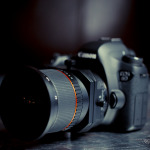

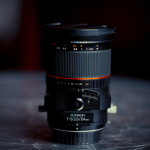
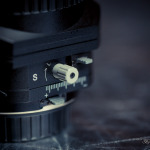
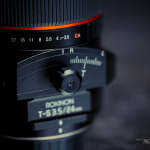

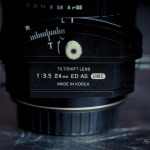









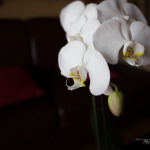
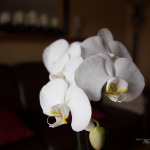
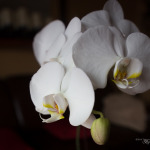

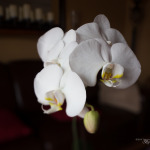






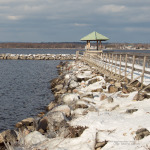

















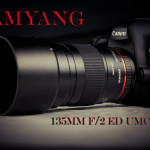


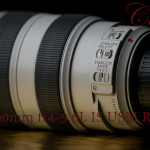
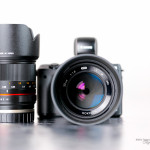
Great feedback, Dave. I tell people that their experience with any gear is what is most important. I try to give as educated an opinion as I can, but ultimately people will decide for themselves whether they do or do not like a product. I’m glad you are happy!
Thank you for the detailed review!
Just a note:
You stated that you used the shift function for the panoramas.
My understanding is that you rather should use the shift function for panoramas.
Regards!
/ Krister
Krister, I’m not sure I understand your comment. I used shift, and you are saying that I should use shift?